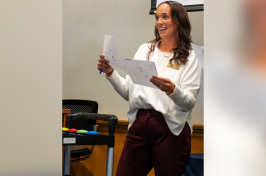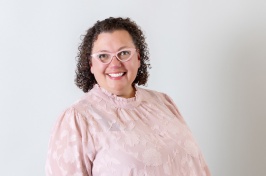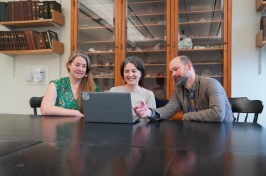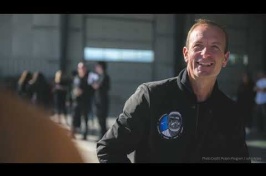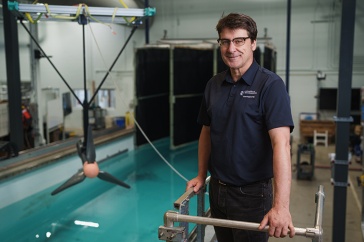
Margaret “Peg” Whittemore found chemistry at Portsmouth High School. It was 1941, her senior year, and she had just moved to New Hampshire from Newton, Mass. Two things helped her adjust to the move: making the cheerleading squad, which she tried out for because her mother thought it would help her meet people, and landing in a class with a teacher who wanted to share his passion for chemistry.
“He was wonderful. He inspired us to look at things in different ways,” Whittemore says. “It’s where I got my love of chemistry.”
That love became her career. It was her major at the University of New Hampshire, where she taught freshman chemistry for two years after graduating in 1946. And it is the field she worked in for more than 20 years as a bench chemist at Instrumentation Laboratory in Bedford, Mass., designing reagents for various instruments used in hospitals and laboratories.
Whittemore, now of Sudbury, Mass., was one of 14 women in the 1960s to receive a National Science Foundation scholarship to further her education. She earned a master’s degree from Wellesley College in 1968.
“I was married with three kids when I was at Wellesley,” Whittemore says. “That’s where I learned about pantyhose. I was complaining about wearing a girdle and one of the young students said, ‘Why don’t you wear pantyhose?’ and I joined the modern world.”
The world at UNH when Whittemore arrived in 1942 was a mirror of what was happening at other universities around the country. World War II was in full swing and men aged 18 to 64 were required to register for the draft.
“There were very few men on campus and that was kind of weird. You go to college, you want to meet these nice young men and they’re off fighting,” Whittemore says. “It was a tragic time; very tense.”
When graduation neared, the chairman of the chemistry department called her into his office and asked if she would consider teaching freshman chemistry the following year. At that point, Whittemore hadn’t decided how she would use her degree and was flabbergasted that she’d been asked.
“I thought, ‘You’ve got to be kidding me,’ and went to find my father. He was out playing golf. I said, ‘I’m sorry to bother you but I need your opinion on something,’” Whittemore says. “When I told him he said, ‘Well, you certainly ought to consider it.’”
Whittemore’s class was on the third floor of James Hall. Most vivid in her memory is explaining to the class that numbers in chemistry are expressed in decimals, not fractions.
“One boy put his hand up and said ‘how do you do that?’ I was amazed that he had no idea and thought ‘this is going to be quite a year.’ And it was,” Whittemore says.
After 22 years at Instrumentation Laboratory, Whittemore left her job in 1990 and shifted her energy to civic involvement. She joined Sudbury’s Earth Decade committee (an offshoot of Earth Day) and, in 2006, wrote a history of the group. She also volunteered with a prison fellowship program.
“I went to Walpole once a week and brought the outside to the inside. It was fascinating,” she says.
Whittemore says her best memories of UNH aren’t so much around academics as they are about her time as a sister in the Chi Omega sorority, an organization with which she remains connected even today. In March, she returned to Durham to attend the group’s centennial celebration, visiting with many of her younger “sisters” from other decades.
Organizer Betsy Murphy ’89 was among the Chi Omegas who took the opportunity to catch up with Whittemore at the event. “Peg’s spunky personality, mixed with her New England charm, was a highlight from the luncheon,” Murphy says.
Originally published in UNH Magazine—Spring/Summer 2015 Issue
-
Written By:
Jody Record ’95 | Communications and Public Affairs | jody.record@unh.edu











